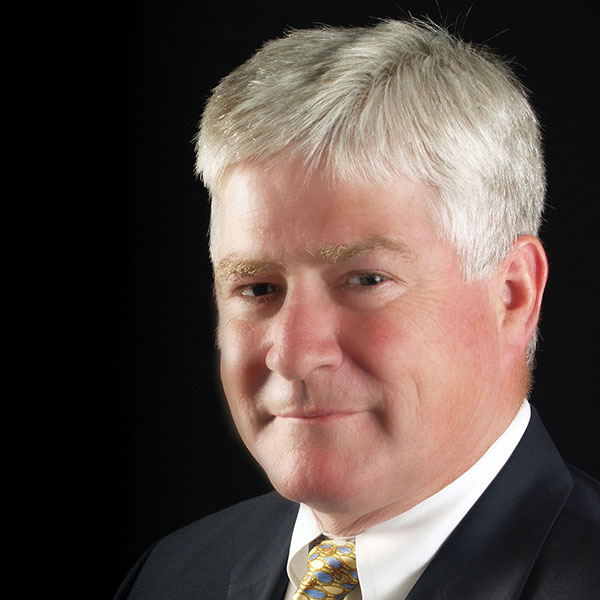On March 30, 2020, CMS issued a set of sweeping new guidelines, both waiving existing rules and expanding payment options to facilitate certain actions. These actions are designed to give hospitals maximum flexibility to take the steps needed to respond to COVID-19 across the US, and are generally retroactively effective on March 1, 2020. This new guidance, particularly as applicable to hospitals and physicians, is summarized below and does not include summaries of waivers previously issued by CMS. Additional information, including information applicable to non-hospital providers, is available on CMS’ website. References for this summary are available at the end of the summary.
Outline
- Hospital Capacity Flexibility
- Stark Waivers
- Telehealth
- Teaching Physician and Resident Flexibility
- Therapeutic Service Supervision
- “Paperwork Reduction”
- Hospital Workforce
- NCD and LCD Waivers
- Inpatient Rehab Waivers
- Other
Summary of Waivers
- Hospital Capacity Flexibility
- CMS is instituting new flexibilities to allow hospitals to provide and bill for services rendered outside the walls of the hospital. Specifically, this will allow hospitals to provide and bill for hospital services “under arrangements” at locations off the hospital campus, such as hotels and community sites.
- This includes waiving certain conditions of participation (CoP) requirements contained in 42 CFR 482.41 and 485.623 to allow flexibilities for non-hospital buildings and spaces to be used that don’t meet specific “physical environment” requirements.
- This also includes waiving certain provider-based requirements at 42 CFR 413.65 to allow hospitals to operate certain off-campus buildings as provider-based to the hospital.
- CMS is relaxing certain CoP that will temporarily allow ASCs to enroll as hospitals to help address patient surges.
- CMS is instituting new flexibilities to allow hospitals to provide and bill for services rendered outside the walls of the hospital. Specifically, this will allow hospitals to provide and bill for hospital services “under arrangements” at locations off the hospital campus, such as hotels and community sites.
- STARK Waivers and other Workforce Expansion and Support Actions
- CMS has issued significant waivers of the STARK law but only to the extent that financial relationships between physicians and hospitals are related to the COVID-19 emergency. The waivers include but are not limited to:
- The requirement that remuneration be FMV for the services provided;
- The requirement that rental charges (for equipment or space) be FMV;
- The requirement that remuneration for services or items purchased be FMV;
- Remuneration in the form of medical staff benefits or non-monetary compensation may exceed de minimus regulatory limits;
- Remuneration resulting from loans between physicians and entities may have interest rates below FMV;
- Referrals may be made by physicians to entities with which a family member has a financial relationship in a rural area;
- Referrals by a physician to an entity with whom a physician has a compensation arrangement where the writing or signature requirement is not met (but other requirements of an exception are).
- As a practical matter, the above waivers allow hospitals to pay physicians extra “hazard” pay; they allow hospitals leeway to rent space as needed to accommodate patients; they allow physicians to provide PPE, ventilators, and other equipment to hospitals below FMV (or hospitals to physicians); they allow hospitals to provide medical staff meals, changes of clothes, etc. for physicians treating COVID-19 patients; they allow physicians and hospitals to quickly enter into arrangements where there may not be time to execute a written agreement.
- Other examples may be found here: https://www.cms.gov/files/document/covid-19-blanket-waivers-section-1877g.pdf
- CMS has issued significant waivers of the STARK law but only to the extent that financial relationships between physicians and hospitals are related to the COVID-19 emergency. The waivers include but are not limited to:
- Telehealth Promotion
- CMS previously expanded the provision of telehealth services by waiving the “originating site” requirement and allowing telehealth to be provided via video chat modalities not required to meet certain HIPAA technological, privacy, and security requirements.
- In the new regulations, CMS expands payment options for telehealth, largely to encourage use of telehealth as well as to compensate physicians for lost revenue due to patient cancellations. The result of the new regulations are that telehealth should be billed, and will be reimbursed, as if it was a face-to-face service.
- CMS thus directs providers to bill telehealth with the place of service that they would utilize if the service were face-to-face; and
- Providers should use the modifier “95” to indicate that a telehealth service is being provided.
- CMS also expanded the list of telehealth services that can be reimbursed as if performed face-to-face. A list of covered services by HCPCS codes is available here.
- Of note, new covered services included initial hospital care and observations services; emergency department visits of all levels; critical care services; various nursing and home health services; various physical therapy and occupational therapy services provided by physicians, nurse practitioners, or physician assistants; NICU services; pediatric critical care; radiation treatment management; and End Stage Renal Dialysis (ESRD) services.
- CMS recognizes that patients who should not be seen by a professional in-person due to the exposure risk are highly likely to be without access to clinically appropriate treatment or diagnostic options unless they have access to services furnished through telehealth. Therefore, CMS expanded the approved Medicare-reimbursed services to include emergency department care and inpatient care as well as services like NICU care. The purpose is to avoid exposing vulnerable populations (such as sick neonates) to COVID-19 and to reduce the exposure risk to healthcare professionals.
- Professional services rendered for EMTALA screening requirements via telehealth are included as acceptable professional services reimbursable by Medicare.
- CMS is also removing the frequency limitation on the use of telehealth for some services, such as subsequent hospital care, to limit exposure of physicians.
- CMS is specifying that for outpatient or office E&M services provided via telehealth, the level of service may be selected based on time rather than medical decision making, and it will not be necessary to document a physical exam or history.
- CMS is also expanding access to virtual “check-ins” to allow new patients to access these services. A variety of practitioners, including clinical social workers and physical and occupational therapists, may provide these services through codes G2061-G2063, G2010 and G2012.
- CMS is expanding “direct supervision” guidelines to allow direct supervision to occur through interactive telecommunication technology in the hopes of limiting physician exposure. Specifically, physicians may provide “direct supervision” through interactive technology for incident to services like drug infusion, diagnostic testing, and hospital therapeutic services. CMS directs physicians to use their best judgement as to when physical presence is important.
- CMS is allowing some payment for telephone communications between providers and patients for CPT codes 98966-98969 and 99441-99443. Such services will be applicable for new and established patients and may be performed by a variety of clinicians including therapists, who shall apply “GO,” “GP,” or “GN” therapy modifiers on claims for these services.
- Teaching Physician and Medical Resident Regulations
- CMS will relax the 42 CFR 411.172 requirement that states a teaching physician should be physically present with medical residents to provide supervision and will instead allow the teaching physician to provide supervision through real-time, interactive technologies and thus be present for the “key portion” of a service.
- CMS will also relax requirements under the “Primary Care Exception” at 42 CFR 415.174 to allow any level of E&M service to be performed by a resident in applicable primary care exception locations as long as the teaching physician is available through interactive technology.
- CMS is also specifically increasing flexibility for residents to provide telehealth services to be billed by the supervising teaching physicians. Thus, residents may provide telehealth services and the teaching physician may bill for such services if the teaching physician is present for the key portions of the service through interactive telecommunication technology. The same flexibility applies for centers that qualify for the Primary Care Exception. Appropriate teaching physician modifiers should be included on such claims.
- The rules will allow residents to “moonlight” and perform services in an inpatient setting in their own hospitals and bill for such services when the resident provides services outside of the resident’s approved training program provided that the resident is fully licensed in the State.
- The rules will allow resident services, such as telehealth and interpretation services performed in the resident’s home or patient’s home, to be counted for IME and DGME payment.
- These rules do not relax requirements for the teaching physician to be present during provision of anesthesia, surgery, or high-risk procedures.
- Changes to Therapeutic Service Supervision
- CMS is making the supervision level required for non-surgical extended duration therapeutic services “general supervision” (defined at 42 CFR 410.32(b)(3)(i)) such that the physician is not required to be on-site at any point during such therapy. These services are all hospital outpatient therapeutic services that fall under 42 CFR 410.27(a)(1)(iv)(E).
- “Paperwork Reduction”
- CMS is waiving the requirements of 42 CFR 482.23, 482.24 and 485.635(d)(3) to allow for additional flexibilities related to verbal orders where read-back verification is still required but authentication may occur later than 48 hours.
- CMS is waiving detailed regulatory requirements to provide information regarding discharge planning, as outlined in 42 CFR 482.43(a)(8), 482.61(e), and 485.642(a)(8). The hospital, psychiatric hospital, or CAH must assist patients, their families, or the patient’s representative in selecting a post-acute care provider by using and sharing data that includes, but is not limited to, home health agency (HHA), skilled nursing facility (SNF), inpatient rehabilitation facility (IRF), and long-term care hospital (LTCH) data on quality measures and resource use measures.
- CMS is waiving certain requirements related to hospital discharge planning for post-acute care services at 42 CFR 482.43(c) to expedite the safe discharge and movement of patients among care settings and to be responsive to fluid situations in various areas of the country.
- CMS is waiving 42 CFR 482.24(a) through (c), which cover the subjects of the organization and staffing of the medical records department, requirements for the form and content of the medical record, and record retention requirements. CMS is waiving requirements under 42 CFR 482.24(c)(4)(viii) and 485.638(a)(4)(iii) related to medical records to allow completion of medical records within 30 days following discharge and, for CAHs, that all medical records must be promptly completed.
- CMS is waiving the requirements at 42 CFR 482.1(a)(3) and 42 CFR 482.30 that mandate that hospitals participating in Medicare and Medicaid to have a utilization review (UR) plan that meets specified requirements. CMS is waiving the entire UR CoP at 42 CFR 482.30, which requires that a hospital must have a UR plan with a UR committee that provides for review of services furnished to Medicare and Medicaid beneficiaries and to evaluate the medical necessity of the admission, duration of stay, and services rendered.
- CMS is waiving 42 CFR 482.21(a) through (d) and (f), and 485.641(a), (b), and (d), which detail the scope, the incorporation, and priority setting for performance improvement activities and integrated QAPI programs (for hospitals that are a part of a hospital system).
- CMS is waiving the provision at 42 CFR 482.23(b)(4), 482.23(b)(7), and 485.635(d)(4), which require the nursing staff to develop and keep current a nursing care plan for each patient, and the provision that requires the hospital to have policies and procedures in place establishing which outpatient departments are not required under to have a registered nurse present.
- CMS is waiving the requirement at 42 CFR 482.28(b)(3) to have a current therapeutic diet manual approved by the dietitian and medical staff readily available to all medical, nursing, and food service personnel. Such manuals would not need to be maintained at surge capacity sites.
- CMS is waiving 42 CFR 482.12(f)(3) related to emergency services, with respect to the surge facility(ies) only, such that written policies and procedures for staff to use when evaluating emergencies are not required.
- CMS is waiving 42 CFR 482.15(b) and 485.625(b), which require hospitals and CAHs to develop and implement emergency preparedness policies and procedures, and 42 CFR 482.15(c)(1) through (5) and 485.625(c)(1) through (5), which requires that the emergency preparedness communication plans for hospitals and CAHs contain specific elements with respect to the surge site
- Hospital Workforce
- CMS is waiving the Medical Staff requirements at 42 CFR 482.22(a)(1) through (4) to allow physicians whose privileges will expire to continue practicing at the hospital and to allow new physicians to practice in the hospital before full medical staff/governing body review and approval.
- CMS is waiving 42 CFR 482.12(c), which requires that Medicare patients be under the care of a physician. The patients may be assigned to other clinical staff, as appropriate.
- CMS is waiving the requirements at 42 CFR 482.52(a)(5), 485.639(c)(2), and 416.42 (b)(2) that a certified registered nurse anesthetist (CRNA) work under the supervision of a physician. CRNA supervision will be at the discretion of the hospital or ambulatory surgical center and State law.
- CMS is waiving the requirement at 42 CFR 482.57(b)(1) that hospitals designate in writing the personnel qualified to perform specific respiratory care procedures and the amount of supervision required for personnel to carry out specific procedures.
- CAH personnel qualifications: CMS is waiving the minimum personnel qualifications for clinical nurse specialist, nurse practitioners, and physician assistants described at 42 CFR 485.604(a)(2), 485.604(b)(1) through (3), and 485.604 (c)(1) through (3). Clinical nurse specialists, nurse practitioners, and physician assistants will still have to meet State requirements for licensure and scope of practice, but not Federal requirements that exceed State requirements.
- CAH staff licensure: CMS is deferring staff licensure, certification, or registration to State law by waiving the requirement at 42 CFR 485.608(d) that staff of a CAH be licensed, certified, or registered in accordance with applicable Federal, State, and local laws and regulations. The CAH and its staff must still be in compliance with applicable Federal, State, and local laws and regulations, and all patient care must be furnished in compliance with State and local laws and regulations.
- Blanket NCD and LCD Changes
- To the extent that NCDs or LCDs have face-to-face requirements not otherwise required by statutes, such requirements are waived. Where required by statute (such as for certain DME device orders), such requirements are not waived but may be met through telehealth.
- To the extent that NCDs or LCDs require a particular type of practitioner to furnish a service, CMS is allowing the Chief Medical Officer of a facility to assign different staff to facilitate such service.
- CMS is also instituting changes to allow maximum flexibility for NCDs and LCDs related to respiratory care and anticoagulation management.
- Inpatient Rehab Changes
- CMS is relaxing the CMS 13 rules, which requires that 60% of admitted patients have one of 13 covered conditions, and will instead allow patients to be treated if the record documents the admission was made as a result of the emergency condition.
- CMS is allowing telehealth services to be performed by physicians that will qualify for the required three weekly physician/patient visits in an inpatient rehabilitation facility.
- CMS is waiving the requirement for post-admission documentation by a physician seeing the patient within 24 hours of admission and documenting admission criteria, as long as the pre-admission screening criteria are met.
- CMS is allowing freestanding rehabilitation hospitals to operate under arrangement with acute care hospitals during the period of emergency.
- Other
- CMS made numerous other waivers applicable to non-hospital providers including home health, hospice, RHCs, FQHCs, ambulance providers, and independent labs.
- CMS has also delayed numerous deadlines, including reporting deadlines and rule compliance deadlines.
Please contact a member of the MMM Healthcare Team for additional information.





